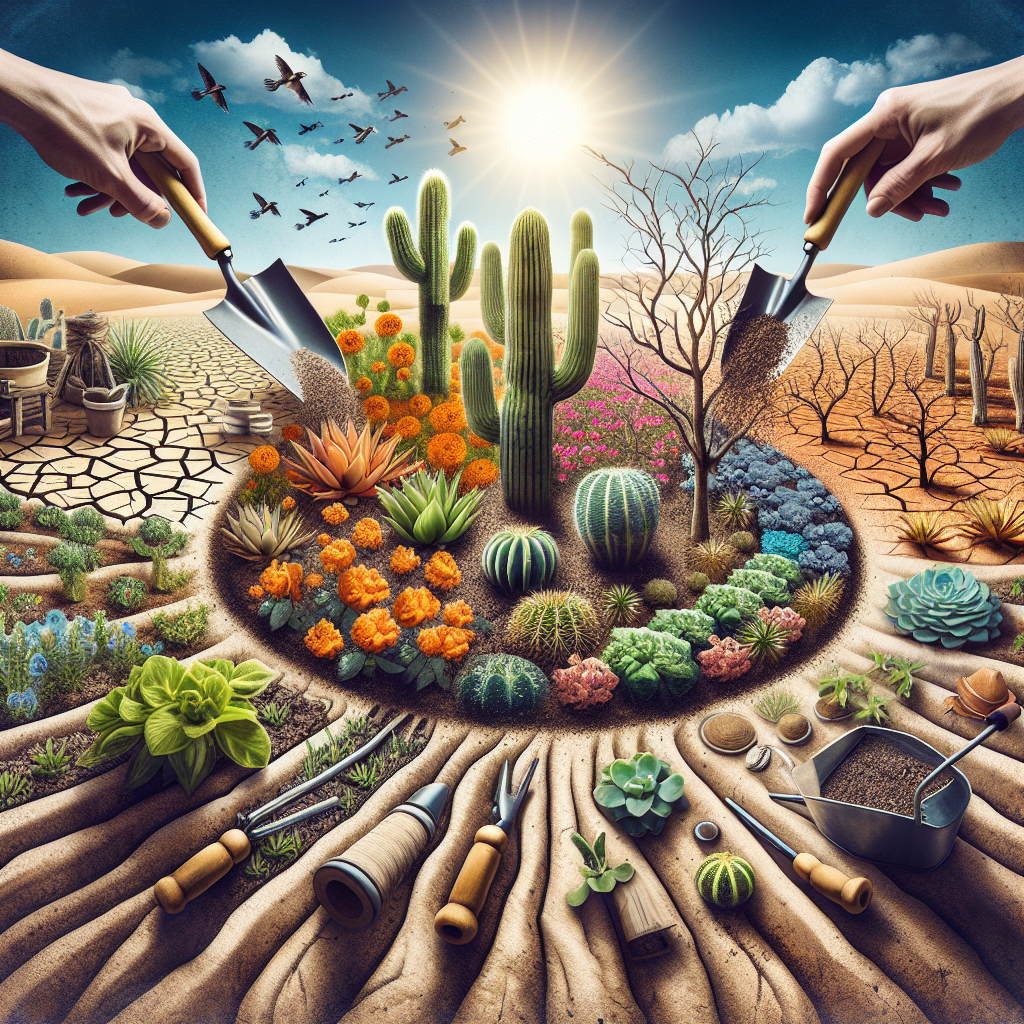As climate change intensifies, water scarcity becomes a pressing issue in many regions. However, with a drought-resistant garden, you can cultivate a flourishing space that conserves water while showcasing vibrant blooms and lush greenery. Whether you’re a seasoned gardener or just starting, crafting a drought-resistant garden can be both rewarding and environmentally friendly. Here’s how to get started.
Understanding Drought-Resistant Gardening
What is Drought-Resistant Gardening?
Drought-resistant gardening focuses on selecting plants and gardening techniques that reduce water use while maintaining a lovely garden. This approach not only helps in conserving water but also minimizes the need for fertilizer and pesticides, leading to healthier soil and ecosystems.
Why Create a Drought-Resistant Garden?
Creating a drought-resistant garden has benefits beyond water conservation. Here are a few compelling reasons:
- Environmental Impact: A drought-resistant garden contributes to local biodiversity and reduces runoff.
- Cost-Effective: Lower water bills and reduced maintenance costs make these gardens wallet-friendly.
- Low Maintenance: Once established, drought-resistant plants require less care, making your gardening experience more enjoyable.
Step-by-Step Guide to Creating Your Drought-Resistant Garden
1. Choose the Right Location
Sunlight is vital for most plants, but managing exposure is crucial in a drought-resistant garden. Identify spots that receive a good deal of sunlight while also considering areas that might need shade during the hottest parts of the day. Observing the patterns of sunlight and shade in your garden will help you make informed decisions about plant placement.
2. Select Native and Drought-Resistant Plants
One of the keys to a successful drought-resistant garden is selecting the right plants. Here are some options:
-
Native Plants: Indigenous plants are adapted to your climate, making them more resilient to drought conditions. Research native species in your area that thrive with minimal water.
-
Succulents and Cacti: These hardy plants store water in their tissues, allowing them to withstand long dry spells. They come in various shapes and colors, adding texture to your garden.
- Perennials: Many perennial plants, such as lavender and sedum, are drought-resistant. Their deep root systems help them access moisture deep in the soil.
3. Implement Water-Saving Techniques
Mulching
Adding a layer of mulch around your plants helps retain moisture in the soil, reduces evaporation, and suppresses weeds. Organic mulches, such as wood chips or straw, also improve soil health as they decompose.
Drip Irrigation
Consider installing a drip irrigation system to deliver water directly to the roots of your plants. This technique minimizes water waste and is especially effective in a drought-resistant garden.
Rainwater Harvesting
Capture rainwater for irrigation by setting up barrels beneath your downspouts. This sustainable method can significantly reduce your reliance on municipal water sources.
4. Build Healthy Soil
Healthy soil is a cornerstone of a drought-resistant garden. Enhance your soil by adding organic matter like compost. This not only improves soil structure but also enhances moisture retention. Testing your soil and amending it based on its needs will promote healthier plant growth.
5. Design a Thoughtful Layout
Creating a drought-resistant garden isn’t just about the plants—it’s also about design. Consider grouping plants with similar water needs together to simplify watering and care. Incorporate pathways and seating areas to make your garden both functional and aesthetically pleasing.
Maintaining Your Drought-Resistant Garden
Water Strategically
In the early stages, new plants may require regular watering until their roots are established. Once they’re settled, water deeply but infrequently to encourage deep rooting. Early mornings or late afternoons are the best times for watering, reducing evaporation.
Monitor Soil Conditions
Keep an eye on your soil moisture levels to prevent over or under-watering. Using a garden moisture meter can help you make informed decisions.
Prune and Deadhead
Regular pruning and deadheading can help plants focus their energy on producing new blooms rather than expending resources on fading flowers or excessive growth.
Conclusion: Your Drought-Resistant Haven Awaits
Creating a drought-resistant garden not only helps combat water scarcity but also fosters a sense of community and environmental stewardship. By selecting the right plants, utilizing efficient watering techniques, and maintaining healthy soil, you’ll create a lush oasis that’s both beautiful and sustainable.
As you embark on your gardening journey, remember that each plant you nurture is a step towards a greener future. Embrace the challenges and celebrate the successes of caring for a drought-resistant garden. Your oasis is just a few carefully placed seeds away!
Start your green journey today and watch your drought-resistant garden flourish!


